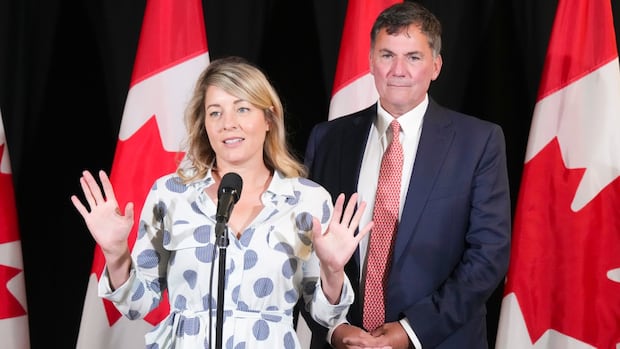Conservatives are limiting media access to Poilievre. Is it helping or hurting him?

At a news conference in Sault Ste. Marie, Ont., on Wednesday, Conservative Leader Pierre Poilievre faced criticism for ignoring a CTV reporter’s question about his refusal to get a security clearance, dismissing her as “just a protester.” The incident highlighted the ongoing challenges journalists have faced in covering the Conservative campaign, where media access to Poilievre has been tightly controlled.
Despite being ahead in the polls, Poilievre’s lead has vanished in recent weeks, with polls now suggesting that he and the Conservatives are trailing the Liberals. This has led some political analysts to question the effectiveness of the Conservative strategy of limiting media access to Poilievre.
David Coletto, founder and CEO of Abacus Data, described the strategy as a safe one when Poilievre was ahead of Justin Trudeau. However, with the political landscape changing due to Trudeau’s resignation and the election of Mark Carney as Liberal leader, the strategy may no longer be effective.
The Conservative campaign has placed strict controls on media access to Poilievre, keeping journalists at a distance and limiting them to four questions with no follow-ups. While other party leaders allow reporters to travel with their campaigns, the Conservatives have decided against it.
Julie Simmons, a political science professor at the University of Guelph, suggested that Poilievre sees mainstream media as biased against him, leading him to focus on alternative ways to reach voters, such as through YouTube videos.
Don Guy, a veteran Liberal strategist, noted that the Conservatives prioritize social media over traditional media, spending millions to build their own online presence. This strategy allows them to reach their desired audience without the risk of Poilievre stumbling in answering questions from reporters.
Allan Thompson, director of Carleton University’s School of Journalism and Communication, criticized the Conservative strategy of limiting media access, suggesting that it could hinder Poilievre’s ability to connect with key demographics, such as baby boomers who rely on traditional media for news.
In conclusion, the Conservative campaign’s approach to media access may be backfiring as Poilievre’s lead in the polls has diminished. Critics argue that the strategy limits the flow of information to voters and could ultimately harm the Conservatives’ chances in the election.




